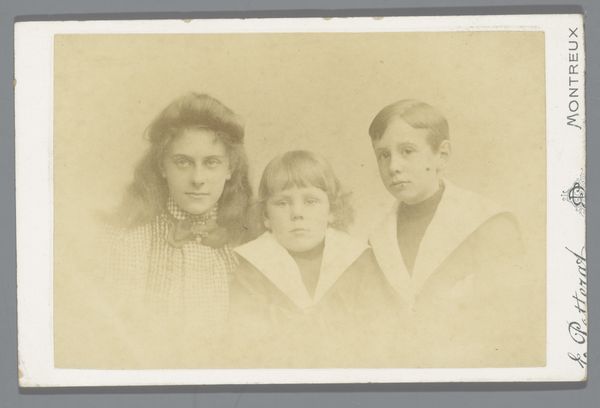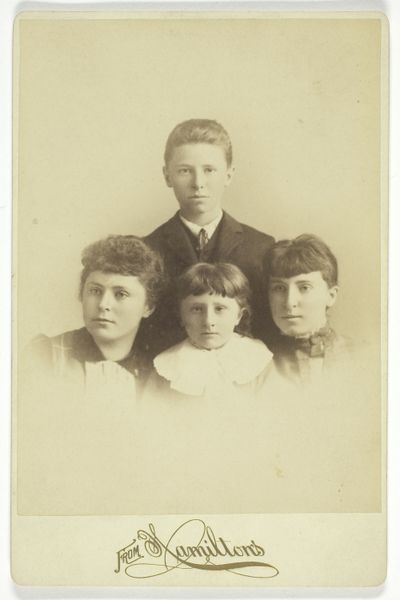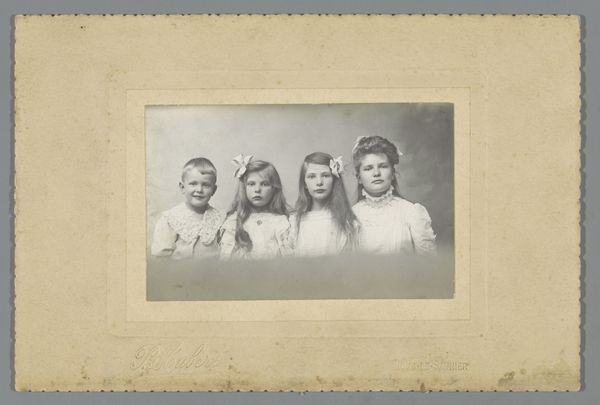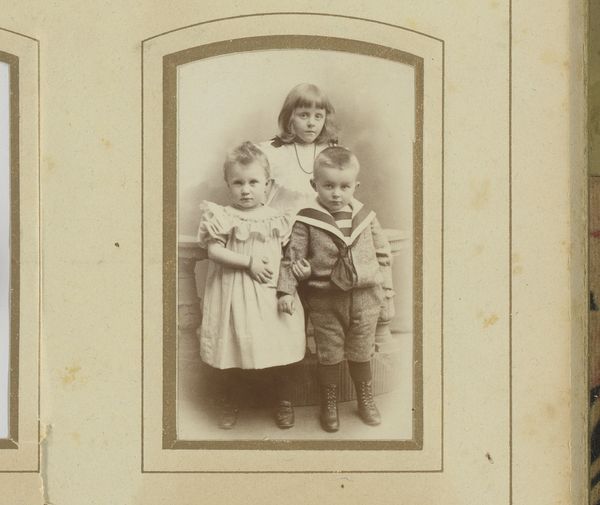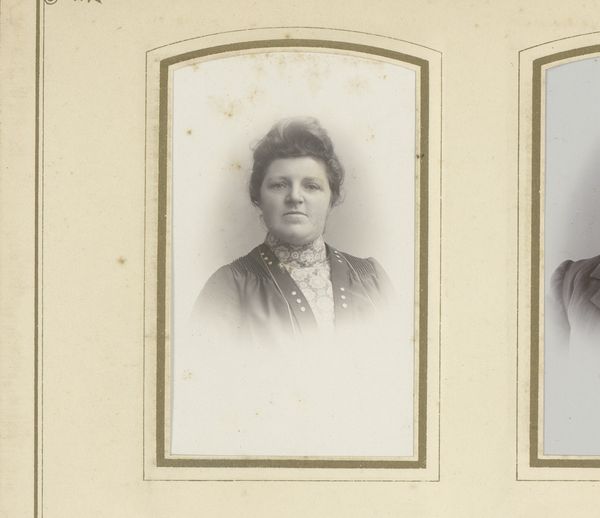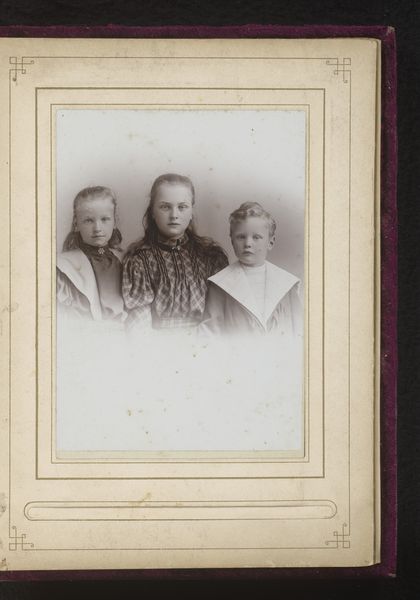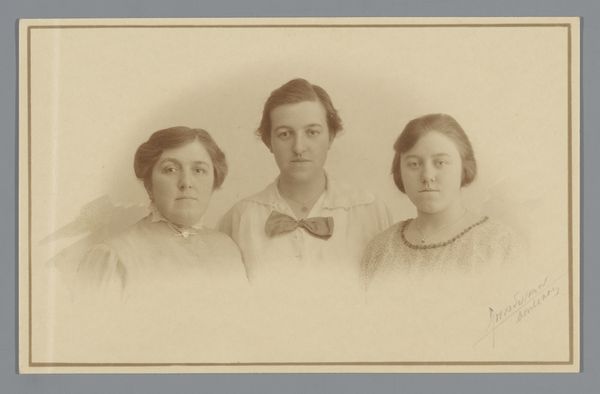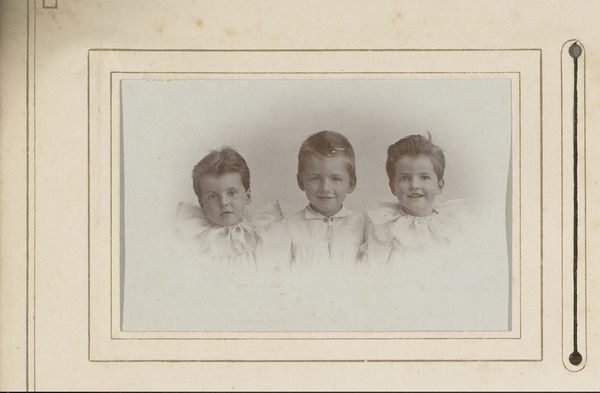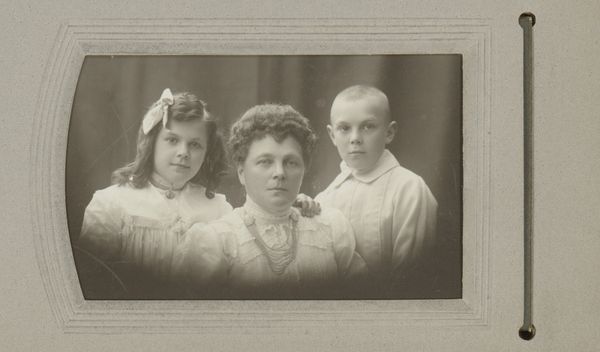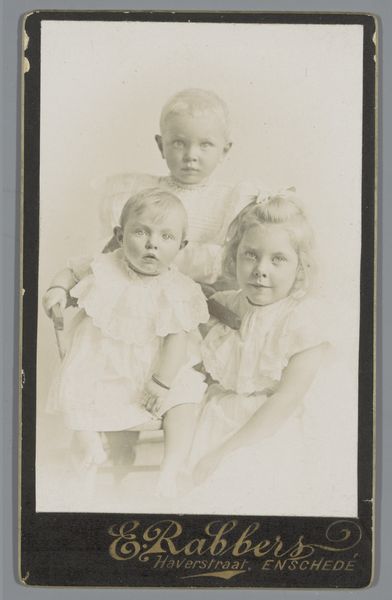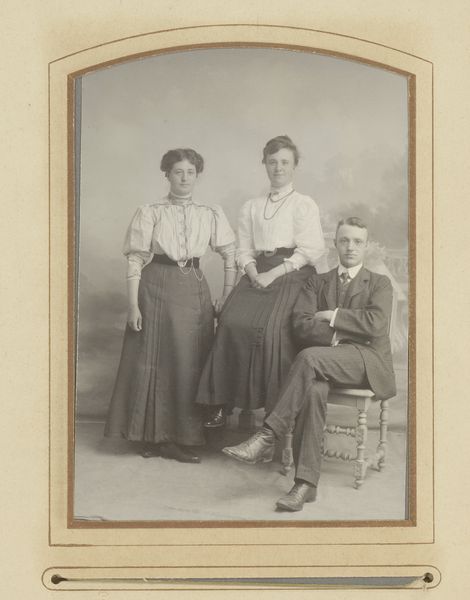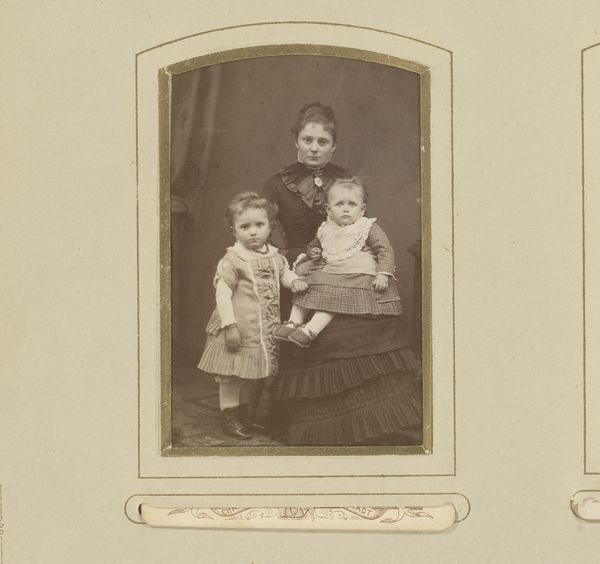
photography, gelatin-silver-print
#
portrait
#
caricature
#
photography
#
child
#
gelatin-silver-print
#
realism
Dimensions: height 238 mm, width 303 mm
Copyright: Rijks Museum: Open Domain
Editor: This gelatin silver print, “Portret van vermoedelijk J.H. Marmelstein met kinderen”, which roughly translates to “Portrait of presumably J.H. Marmelstein with children”, was taken sometime between 1900 and 1940 by J. Kuipers. The somberness of the tones and the subjects’ expressions evokes a very specific mood. What social context can you bring to the forefront in thinking about this portrait? Curator: Well, let's consider the socio-political landscape of the Netherlands during that time. The early 20th century was a period of significant social change, including evolving conceptions of family and childhood, visible in popular imagery and photography, which democratized the art of portraiture. Do you notice anything in the composition suggesting traditional social roles or, conversely, a break from them? Editor: The arrangement feels very posed, almost rigid, suggesting perhaps an adherence to convention. The clothing too, the buttoned shirts, evokes formality. Curator: Exactly. Formal studio portraiture was, for many, a display of social status, and, by extension, access. However, with photography’s increased accessibility, these traditions also underwent revisions. Thinking about the medium, photography was simultaneously art and documentation. How might the tensions between these modes be at play here? Editor: I see your point. It is a family portrait, and yet, the emotional distance is noticeable, perhaps hinting at tensions or simply conventions around posing. This wasn’t a casual snapshot but a constructed image designed for public consumption. Curator: Indeed. We must consider how the desire to present a particular image influenced both the subjects and the photographer. Archival photographs, like this one, prompt important considerations surrounding identity, representation, and the enduring power of images in shaping our perceptions of the past. Editor: That’s a fascinating perspective. I learned how this photography allows a deeper understanding of not just the people in the photograph, but Dutch society and history more broadly.
Comments
No comments
Be the first to comment and join the conversation on the ultimate creative platform.
